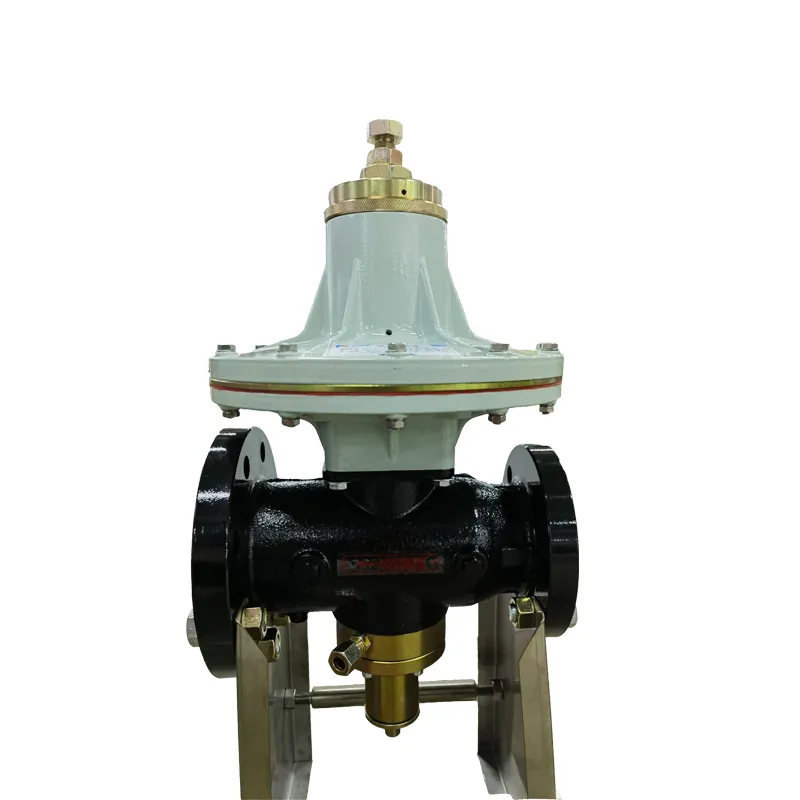
Sep . 26, 2024 05:34
Back to list
محطة تخفيض ضغط الغاز
Understanding Gas Pressure Reduction Stations
Gas pressure reduction stations are essential components in the natural gas distribution system. Their primary purpose is to safely reduce the pressure of natural gas before it enters residential, commercial, or industrial end-user facilities. This article explores the significance, operation, components, and safety measures associated with gas pressure reduction stations.
The Importance of Gas Pressure Reduction
Natural gas is transported over long distances through high-pressure pipelines, which are necessary to maintain the efficiency of gas flow and reduce transport costs. However, the pressure at which gas is transported is often too high for end-use applications. For instance, residential consumers typically require gas at a pressure of around 0.25 psi, whereas transmission pipelines may operate at pressures exceeding 1,000 psi. Hence, gas pressure reduction stations serve a critical role in ensuring that gas is delivered at a safe and usable pressure.
Operational Mechanism
The operation of a gas pressure reduction station involves several key steps. Initially, high-pressure gas enters the facility through an inlet. Here, it passes through a pressure-regulating valve that reduces the pressure to the desired level. This valve functions based on the principle of differential pressure, adjusting the flow based on the downstream demand.
Furthermore, gas often travels through a series of filters to remove impurities like dirt and moisture, which can be harmful to downstream appliances and infrastructure. Once the gas has been reduced in pressure and cleaned, it is then directed to the distribution network to reach consumers.
Key Components
Gas pressure reduction stations consist of several crucial components
.
2. Filters These devices ensure that the gas is free from any foreign particles that could damage equipment or affect combustion efficiency.
محطة تخفيض ضغط الغاز

3. Safety Relieving Valves In the event of excessive pressure build-up, these valves release gas to prevent accidents or equipment damage.
4. Flow Meters Used to measure the flow rate of the gas entering and exiting the station, they provide crucial data for monitoring and optimization.
5. Supervisory Control and Data Acquisition (SCADA) Systems These computerized systems help in monitoring and controlling the pressure reduction process. SCADA systems provide real-time data and alarms for any anomalies, ensuring continuous and safe operation.
Safety Measures
The safety of gas pressure reduction stations cannot be overstated. Given the potential hazards associated with high-pressure gas, several safety measures are implemented
- Regular Maintenance Equipment is inspected and maintained regularly to ensure optimal performance and safety. This includes checking valves, filters, and safety relief systems.
- Emergency Protocols Stations are equipped with robust emergency response plans to deal with potential gas leaks or equipment failures, including automatic shut-off systems that activate in case of an emergency.
- Training Personnel operating the stations are required to undergo extensive training regarding gas operations, emergency procedures, and safety practices.
- Monitoring Systems Continuous monitoring of pressure levels, flow rates, and equipment status helps detect anomalies early, allowing for proactive measures to be taken.
Conclusion
Gas pressure reduction stations are vital in the natural gas supply chain. They ensure that gas is delivered safely and reliably to consumers while maintaining the necessary pressure levels that meet operational requirements. Understanding their operation, components, and safety measures is crucial for anyone involved in the gas industry. As demand for natural gas continues to rise, the role of these stations will only become more significant, highlighting the need for continuous improvement and innovation in their design and operation. Through enhanced safety protocols and technological advancements, we can ensure that gas delivery systems meet the needs of the future while prioritizing safety and efficiency.
Latest news
-
Safety Valve Spring-Loaded Design Overpressure ProtectionNewsJul.25,2025
-
Precision Voltage Regulator AC5 Accuracy Grade PerformanceNewsJul.25,2025
-
Natural Gas Pressure Regulating Skid Industrial Pipeline ApplicationsNewsJul.25,2025
-
Natural Gas Filter Stainless Steel Mesh Element DesignNewsJul.25,2025
-
Gas Pressure Regulator Valve Direct-Acting Spring-Loaded DesignNewsJul.25,2025
-
Decompression Equipment Multi-Stage Heat Exchange System DesignNewsJul.25,2025

